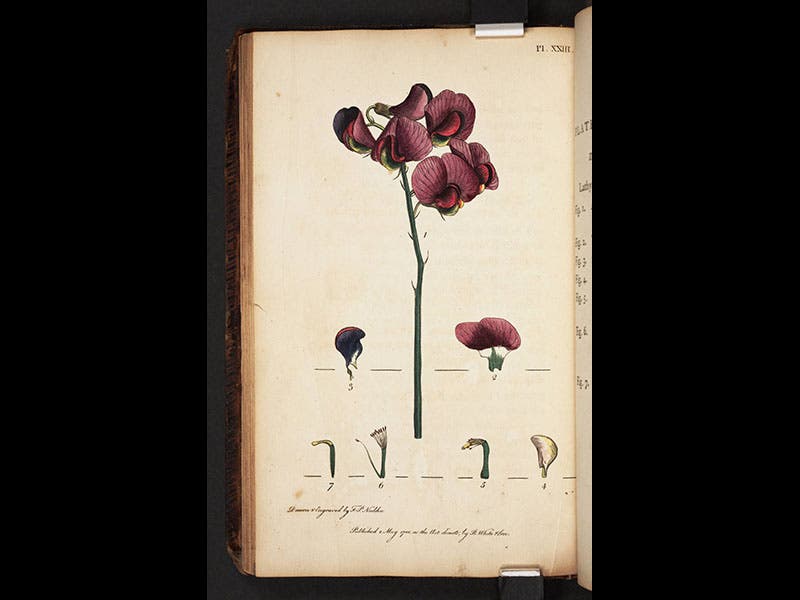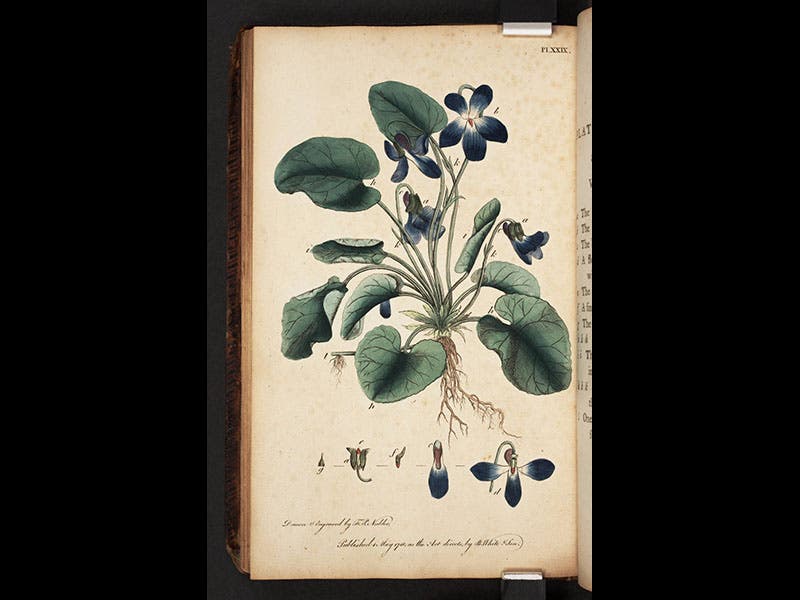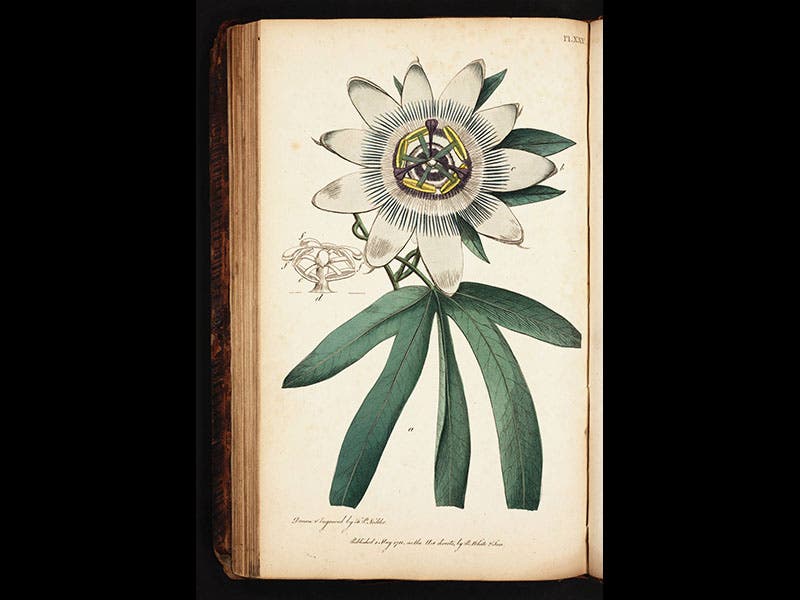Scientist of the Day - Thomas Martyn
Thomas Martyn, an English botanist, was born Sep. 23, 1735. Thomas inherited the professorship of botany at Cambridge University from his father, John (yes, you could do such things in those days). He might have backed into a plum job, but he immediately set about justifying his selection by working to introduce Linnaean botany into England. Linnaeus had sought to transform botany in 1753 with the publication of his Species plantarum, in which he suggested radical changes in both botanical nomenclature and the taxonomy of botany. Martyn was one of the first botanists in England to welcome the Linnaean innovations. In 1785, he published a translation of Rousseau's Letters on the Elements of Botany, and to Rousseau’s original eight, he added 24 letters of his own, in which Martyn set forth the details of the Linnaean system, even providing a new fold-out chart of the 25 Linnaean classes of plants.
Later, he published a set of colored engravings to illustrate the new classes (Thirty-eight plates, with illustrations; intended to illustrate Linnaeus's System of vegetables, 1799). We have both of these works in the Library, and four of the Thirty-eight Plates have been digitized, so you may see above the Everlasting Pea, with its Linnaean name, Lathyrus latifolius (first image); a myrtle and quince (second image); a violet, Viola odorata (third image), and a blue passion flower, Passiflora caerulea (fourth image).
Dr. William B. Ashworth, Jr., Consultant for the History of Science, Linda Hall Library and Associate Professor, Department of History, University of Missouri-Kansas City. Comments or corrections are welcome; please direct to ashworthw@umkc.edu.










